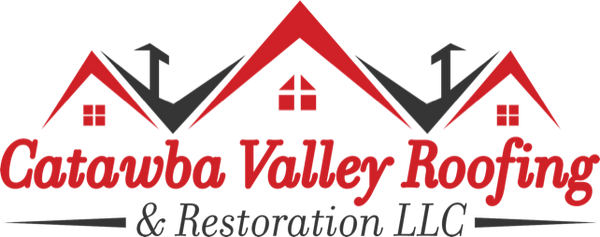How Do I Know If Roof Damage Is Covered Under My Insurance Policy?
When your roof suffers damage, one of the first questions you may ask is: “Is this covered under my insurance policy?” The good news is that most homeowners insurance policies cover roof damage caused by certain events, such as storms, wind, or hail. However, understanding what is covered and what isn’t can be a little tricky. This post will guide you through the process of determining whether your roof damage is covered under your policy and how to proceed if you need to file a claim.
Understanding Homeowners Insurance Coverage for Roof Damage
Your homeowners insurance policy typically covers roof damage caused by certain "covered perils," which are specific events or circumstances listed in the policy. The details of these covered perils can vary from one insurer to another, but in general, most standard policies cover damage from things like:
Windstorms
Hail
Fallen trees or debris
Fire
Vandalism or theft
However, there are some key exclusions to be aware of. Here’s a breakdown of what you need to know:
What Is Likely Covered Under Your Roof Insurance Policy?
Storm and Wind Damage
If your roof is damaged by a windstorm, hailstorm, or other weather events like hurricanes, your insurance will typically cover the cost of repairs or replacement, minus your deductible. This is one of the most common claims homeowners make.
Fire or Lightning Damage
Damage from fire or lightning strikes is typically covered by most homeowners insurance policies. If your roof is damaged by a fire that started due to an external source, such as lightning, it’s generally covered.
Fallen Trees or Debris
If a tree falls on your roof due to a storm or high winds, your insurance should cover the cost of repairs. This also includes damage from other debris, such as broken branches or objects blown onto your roof.
Vandalism or Theft
If your roof is damaged as a result of vandalism or theft (for example, someone steals shingles or damages your roof for malicious reasons), your homeowners insurance should cover the repairs.
What Is Likely Not Covered Under Your Roof Insurance Policy?
Normal Wear and Tear
Insurance policies typically do not cover damage caused by general wear and tear or lack of maintenance. If your roof is old and deteriorating due to years of exposure, you may be responsible for the repairs. Routine maintenance, like replacing missing shingles or cleaning gutters, is the homeowner’s responsibility.
Flood Damage
Floods are not generally covered under standard homeowners insurance policies. If your roof has been damaged as a result of flooding or water pooling on your roof, you may need separate flood insurance to cover the repairs.
Earthquakes or Landslides
Earthquakes and landslides are usually not covered under standard homeowners insurance policies. If you live in an area prone to these types of natural disasters, you may need additional coverage to protect your home.
Negligence or Improper Repairs
If the damage to your roof was caused by neglect (like failing to fix leaks or broken shingles) or if the roof was improperly repaired or installed, your insurance company may deny the claim. Always hire professional contractors for roof repairs and inspections.
Steps to Determine If Roof Damage Is Covered
Review Your Insurance Policy
The first step is to review your homeowners insurance policy. Pay close attention to the "Coverage" section to see which perils are listed. Look for specific wording related to roof damage and exclusions, as these will help you understand what’s covered.
Check for Specific Roof Coverage
Some policies include specific details about roof coverage, especially when it comes to replacement costs or repairs. Make sure you know if your policy covers the full replacement cost of your roof or if it’s subject to depreciation.
Call Your Insurance Agent
If you're still unsure about your coverage, contact your insurance agent for clarification. They can explain exactly what is and isn’t covered under your policy and help you understand any exceptions or exclusions.
Get a Professional Roof Inspection
Sometimes, it's difficult to assess roof damage on your own, especially if the damage is not immediately visible. A professional roofing contractor can inspect your roof and provide an assessment of the damage. This is particularly helpful if you need to file a claim, as they can give you a detailed report to share with your insurance company.
What to Do If Your Roof Damage Is Covered
If your insurance policy covers the damage to your roof, the next step is to file a claim. Here’s a general overview of the claims process:
Document the Damage
Take photos and videos of the damage to your roof from multiple angles. This will help support your claim and ensure that your insurance adjuster has all the information needed.
Contact Your Insurance Company
Notify your insurer as soon as possible to begin the claims process. They’ll assign an adjuster to assess the damage and determine the payout amount.
Hire a Reputable Roofing Contractor
Once your claim is approved, hire a reputable contractor to perform the necessary repairs. Be sure to get multiple estimates and choose a contractor with experience working with insurance claims.
Review Your Insurance Payout
After the adjuster evaluates the damage, review your insurance payout. Make sure it covers the full cost of repairs or replacement, minus your deductible. If there’s a discrepancy, discuss it with your insurance company.
Call Us for a FREE Roof Inspection!
If you're unsure about whether your roof damage is covered or need a professional assessment of your roof's condition, call us at (828) 962-0617 for a FREE roof inspection. Our experienced team will help you understand your roof’s condition and guide you through the process of filing an insurance claim if necessary.
Service Areas:
Alexander County, Catawba County, Burke County, Iredell County, and Caldwell County.
